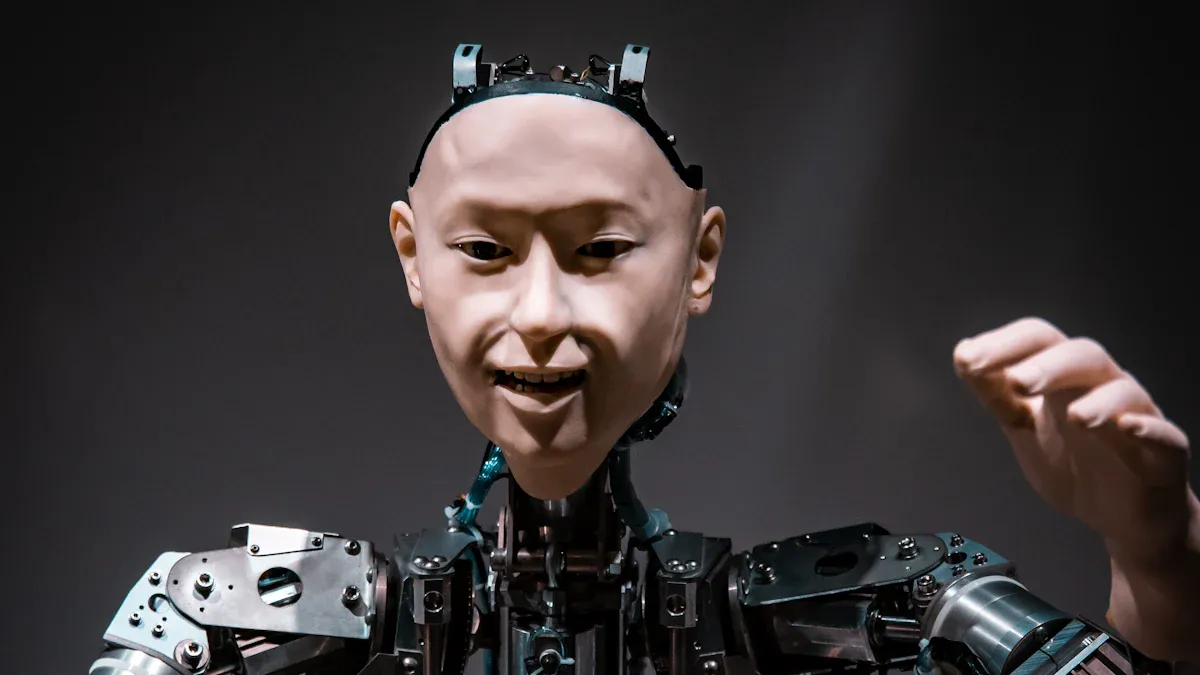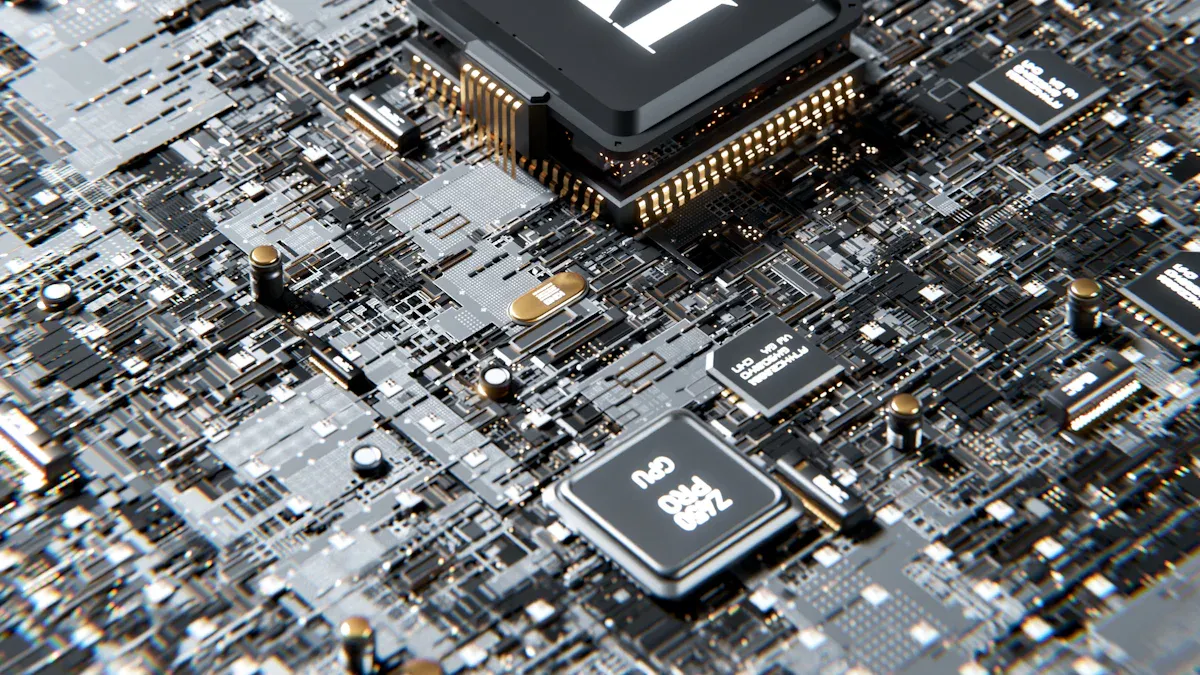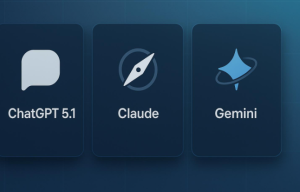
Artificial Intelligence (AI) exists in two distinct forms: embodied and traditional. Embodied AI refers to systems integrated with physical components that interact directly with real-world environments. Traditional AI operates virtually, focusing on computational tasks within digital spaces. For example, virtual AI agents manage processes in factories, while embodied AI agents, like robots, perceive and adapt to their surroundings. Understanding these differences helps you connect AI capabilities to practical applications, such as robotics or automation, and reveals how physical embodiment enhances adaptability in dynamic settings.
Key Takeaways
-
Embodied AI works in the real world, while traditional AI stays in virtual spaces. This difference affects what they can do.
-
Embodied AI is great at handling real-life changes. It works well in places like disaster areas or hospitals.
-
Traditional AI is best at studying data and solving problems quickly. It’s useful for things like predicting markets or automating customer service.
-
Using both embodied AI and traditional AI together can create new ideas. This helps improve physical tasks and data-based decisions.
-
It’s important to think about safety and privacy when building embodied AI. This ensures it is used responsibly.
Understanding Embodied AI

Definition and Core Characteristics
Embodied AI refers to artificial intelligence systems that exist within physical entities, such as robots or drones. Unlike traditional AI, which operates in virtual environments, embodied AI interacts directly with the real world. These systems combine sensory inputs, decision-making processes, and physical actions to adapt to their surroundings. For example, they might use cameras, sensors, and actuators to perceive and respond to changes in their environment.
Key principles of embodied artificial intelligence include avoiding reliance on predefined logic and incorporating evolutionary learning mechanisms. This allows these systems to continuously adapt and improve. The environment plays a crucial role in shaping both their physical behaviors and cognitive abilities. Researchers have even drawn parallels between embodied AI and how toddlers learn through interaction, emphasizing the importance of integrating multiple sensory inputs for effective learning.
Examples of Embodied AI in Action
You encounter embodied AI in various real-world applications. Robots in warehouses, for instance, use sensors to navigate and sort packages efficiently. Autonomous vehicles represent another example, as they rely on embodied AI to process data from cameras and radar systems to make driving decisions. Healthcare robots, such as robotic surgical assistants, also demonstrate the potential of embodied AI by performing precise physical tasks while responding to real-time feedback.
These examples highlight how embodied AI systems excel in tasks requiring physical interaction. By engaging with their environment, they can adapt to dynamic conditions and perform complex operations that virtual AI systems cannot achieve.
Importance of Physical Interaction
Physical interaction is a defining feature of embodied AI. It enables these systems to learn and adapt in ways that virtual AI cannot. For instance, a robot learning to walk must interact with the ground, adjust its balance, and refine its movements based on feedback. This process mirrors how humans and animals learn through trial and error.
The ability to interact with the physical world also enhances the versatility of embodied artificial intelligence. It allows these systems to operate in unpredictable environments, such as disaster zones or outer space. By relying on real-world feedback, embodied AI can develop more robust and flexible behaviors, making it invaluable for applications where adaptability is crucial.
Understanding Traditional AI
Definition and Core Characteristics
Traditional AI systems focus on solving specific problems using algorithms and data-driven models. These systems rely on predefined rules and statistical methods to process information and generate outputs. For example, they analyze large datasets to identify patterns or predict outcomes. Unlike embodied AI, traditional AI operates entirely within virtual environments, making it resource-efficient and optimized for computational tasks.
Some key characteristics define traditional AI:
-
It excels at executing predefined tasks with high accuracy.
-
It learns from data to make predictions or decisions in new scenarios.
-
It lacks adaptability for complex or unpredictable situations.
-
It remains limited to specific applications, such as speech recognition or customer service automation.
This approach offers transparency and ease of interpretation, making traditional AI suitable for industries that require precise and predictable results.
Examples of Traditional AI Applications
You encounter traditional AI in many areas of daily life. Virtual assistants like Siri and Alexa use natural language processing to understand and respond to your queries. In healthcare, AI systems analyze medical images to detect diseases with remarkable accuracy. Financial institutions employ AI to predict market trends and automate fraud detection.
Here are some measurable benefits of traditional AI applications:
|
Metric |
الوصف |
|---|---|
|
Cost savings |
Reduction in expenses achieved through AI’s automation efforts, tracking financial impact. |
|
Time savings |
Reduction in time needed to complete tasks post-AI implementation, improving productivity and efficiency. |
|
Revenue growth |
Measures growth in sales and new business opportunities generated with AI, assessing financial benefits. |
|
Customer satisfaction |
Tracks improvements in customer experience post-AI implementation, indicating overall effectiveness. |
These examples demonstrate how traditional AI systems enhance efficiency and accuracy across diverse industries.
Focus on Virtual and Computational Environments
Traditional AI thrives in virtual environments where it processes data and performs computations. It uses mathematical models and algorithms to simulate decision-making processes. For instance, machine learning models analyze historical data to predict future trends, while neural networks classify images or translate languages.
Operating in virtual spaces allows traditional AI to scale efficiently. It can process vast amounts of data without requiring physical hardware, making it ideal for applications like cloud computing and big data analysis. This focus on computational environments ensures that traditional AI remains a cornerstone of industries reliant on data-driven insights.
Key Differences Between Embodied AI and Traditional AI

Physical Embodiment vs. Virtual Operation
Embodied AI operates in the physical world, while traditional AI exists purely in digital environments. This distinction shapes their form, function, and applications. For example, embodied AI systems, like robots, rely on hardware components such as sensors and actuators to interact with their surroundings. In contrast, traditional AI systems function as software programs, analyzing data and performing computations without physical interaction.
The following table highlights key differences between these two approaches:
|
Aspect |
Physical AI |
Virtual AI |
|---|---|---|
|
Form and Function |
Operates in the real world |
Exists purely in the digital space |
|
Hardware vs. Software |
Requires tangible hardware |
Exists entirely as software |
|
Applications |
Found in manufacturing, healthcare, transportation |
Common in data management, customer service |
|
Interaction Type |
Real-time interactions with the environment |
Primarily analyzes and processes data |
These differences influence how each type of AI is designed and deployed. Embodied AI systems excel in tasks requiring physical interaction, while traditional AI thrives in data-driven environments.
Interaction with the Real World
Embodied AI stands out for its ability to interact directly with the physical world. This interaction allows it to process continuous sensory inputs and respond to real-time feedback. For instance, a robot equipped with embodied AI can navigate a warehouse, avoiding obstacles and adjusting its path dynamically. This capability makes embodied AI ideal for unpredictable environments, such as disaster zones or outer space.
In contrast, traditional AI operates in virtual spaces, where it processes data without engaging with the physical world. Language models, for example, analyze text to generate responses but lack the ability to perceive or act in real-world settings. This difference highlights the unique strengths of embodied AI in applications requiring adaptability and physical presence.
A study on teleoperation tasks emphasizes the importance of performance metrics in assessing cognitive and physical workload. It shows that embodied AI systems must balance primary and secondary task demands, making real-time interaction a critical factor in their success.
Hardware and Resource Requirements
Embodied AI systems require specialized hardware to function effectively. Sensors, cameras, and actuators enable these systems to perceive and interact with their environment. For example, autonomous vehicles use cameras and radar systems to detect obstacles and navigate roads. This reliance on hardware increases the complexity and cost of embodied AI systems compared to traditional AI.
Traditional AI, on the other hand, operates entirely as software. It processes data using computational resources, such as cloud servers or local machines. This approach reduces hardware requirements, making traditional AI more resource-efficient. However, it also limits its ability to perform tasks that involve physical interaction.
Embodied AI's need for hardware highlights its focus on real-world applications. By contrast, traditional AI's reliance on software makes it better suited for tasks like data analysis and virtual assistance.
Application Domains and Use Cases
Artificial intelligence has revolutionized industries by offering tailored solutions for diverse application domains. Embodied AI and traditional AI excel in different areas, each bringing unique capabilities to the table.
Embodied AI Applications
Embodied AI thrives in environments requiring physical interaction and adaptability. You see its impact in industries like manufacturing, healthcare, and transportation. Robots equipped with embodied AI streamline warehouse operations by sorting packages and navigating complex layouts. Autonomous vehicles rely on embodied AI to process real-time data from sensors, ensuring safe and efficient driving.
In healthcare, robotic surgical assistants perform precise procedures, reducing human error and improving patient outcomes. Disaster response robots equipped with embodied AI operate in hazardous environments, assisting in search-and-rescue missions. These systems adapt to unpredictable conditions, making them invaluable in scenarios where flexibility and physical presence are essential.
Traditional AI Applications
Traditional AI dominates domains that rely on data analysis and computational efficiency. Virtual assistants like Siri and Alexa enhance communication by understanding and responding to your queries. In personal finance, AI-powered tools help you manage budgets and track expenses, leading to measurable improvements in savings.
Healthcare applications of traditional AI include diagnostic tools that analyze medical images with remarkable accuracy. AI tutors in education provide personalized learning experiences, helping students achieve higher scores in practical assessments. Travel planning platforms powered by traditional AI reduce the time spent organizing trips while improving satisfaction levels.
Comparing Use Cases
The table below highlights quantifiable benefits across various application domains:
|
Application Domain |
Benefit |
|---|---|
|
Communication Assistance |
43% reduction in time spent on email composition for non-native English speakers. |
|
Personal Finance Management |
Average monthly savings increase of 23% after six months of using a personal finance agent. |
|
Health and Wellness Support |
27% increase in medication adherence and 32% increase in dietary compliance for diabetes patients. |
|
Learning and Skill Development |
28% higher scores on practical coding assessments for students using AI tutors. |
|
Travel and Logistics Planning |
67% less time spent on trip planning with higher satisfaction reported. |
|
Healthcare and Medical Assistance |
23% improvement in diagnostic accuracy and 37% reduction in time to diagnosis with AI support. |
Embodied AI focuses on tasks requiring physical presence, while traditional AI excels in virtual environments. Together, they complement each other, addressing a wide range of challenges across industries.
Advantages of Embodied AI
Real-World Adaptability
Embodied AI systems excel in adapting to dynamic and unpredictable environments. Unlike traditional AI, which operates in controlled virtual spaces, these systems interact directly with the physical world. This interaction allows them to process real-time feedback and adjust their actions accordingly. For example, robots in warehouses, such as Amazon's Proteus Robot, navigate busy spaces, detect obstacles, and modify their movements on the fly. Similarly, Tesla’s robotic arms in factories identify production line issues and make real-time adjustments to maintain efficiency.
You can see this adaptability in healthcare as well. The Da Vinci Robot by Intuitive Surgical assists doctors during surgeries by mirroring and enhancing their movements. This capability ensures precision and reduces the risk of human error. These examples highlight how embodied AI systems thrive in environments where flexibility and responsiveness are essential.
Embodied AI's ability to adapt to real-world conditions makes it a powerful tool for industries that demand quick decision-making and physical interaction.
Enhanced Human-AI Collaboration
Embodied AI fosters natural and fluid interaction between humans and machines, creating opportunities for collaboration. These systems work alongside you, enhancing your capabilities rather than replacing them. For instance, robotic surgical assistants amplify a surgeon's precision, while collaborative robots (cobots) in manufacturing assist workers by handling repetitive or physically demanding tasks.
Research supports the benefits of human-machine interaction in embodied AI systems. Studies show that communication and feedback loops between humans and AI improve mutual adaptation. For example, creative collaboration with AI engages metacognitive regulation, where you assess and incorporate AI contributions. Long-term studies also reveal that users develop relationship-like dynamics with AI, which increases engagement and trust.
|
Evidence Description |
Source |
Year |
|---|---|---|
|
Creative collaboration engages metacognitive regulation, where humans assess and incorporate AI contributions. |
Lubart |
2022 |
|
Communication and feedback loops are central to developing human-AI partnerships, facilitating mutual adaptation. |
Rudnicky |
2023 |
|
Longitudinal studies show users develop relationship-like dynamics with AI, affecting engagement. |
Hancock et al. |
2023 |
|
Psychological factors significantly influence creative outcomes, more than technical skills. |
Lee and Nass |
2024 |
These findings demonstrate how embodied AI enhances collaboration by fostering trust and improving teamwork. This makes it an invaluable partner in industries where human-AI partnerships drive innovation.
Applications in Robotics, Healthcare, and More
Embodied AI has revolutionized industries by enabling robots and machines to perform tasks that require physical presence and adaptability. In robotics, these systems streamline operations in warehouses and factories. For example, Tesla’s robotic arms and Amazon’s Proteus Robot optimize production and logistics by adapting to real-time conditions. The automobile and manufacturing sectors alone account for nearly 29.8% of all embodied AI applications in the U.S. market by 2025.
In healthcare, embodied AI plays a critical role in improving patient outcomes. Robots equipped with these systems perform tasks like drug delivery, room sanitation, and even assisting in surgeries. These applications enhance safety, hygiene, and precision. For instance, robotic surgical assistants reduce human error and improve recovery rates. The U.S. embodied AI market is projected to reach USD 4.3 billion by 2034, reflecting its growing importance across sectors.
You also see embodied AI in disaster response and space exploration. Robots equipped with adaptive AI operate in hazardous environments, assisting in search-and-rescue missions or conducting experiments in outer space. These applications demonstrate the versatility of embodied AI in addressing challenges that require both physical interaction and adaptability.
The ability of embodied AI to operate in diverse environments makes it a game-changer for industries ranging from manufacturing to healthcare and beyond.
Advantages of Traditional AI
Computational Efficiency
Traditional AI systems excel in computational efficiency, making them ideal for tasks requiring high-speed processing. These systems rely on advanced algorithms, such as gradient descent and reinforcement learning, to optimize performance. However, some methods, like Q-learning, can demand significant memory and computational resources due to their complexity. Neural networks, for instance, often require large parameter matrices, leading to cubic complexity in storage and computation.
Innovative frameworks, like the Reef Framework, address these challenges by introducing self-regulating reinforcement mechanisms. This approach eliminates the need for backpropagation, reducing computational load to O(1) for updates. As a result, you benefit from real-time adaptability without the delays caused by constant retraining. This efficiency not only enhances scalability but also minimizes energy consumption, making Traditional AI a sustainable choice for large-scale applications.
Tip: Leveraging efficient AI frameworks can significantly reduce costs and improve system performance.
Versatility in Data Analysis
Traditional AI stands out for its ability to analyze data across various domains. These systems process information faster and more accurately than manual methods, uncovering hidden patterns in complex datasets. For example, machine learning models can predict trends based on historical data, enabling you to make informed decisions.
|
Feature |
الوصف |
|---|---|
|
Speed |
AI tools process data significantly faster than traditional methods. |
|
Accuracy |
Enhanced precision in data analysis reduces errors compared to manual methods. |
|
Predictive Capabilities |
AI can forecast trends and outcomes based on historical data. |
|
Handling Large Datasets |
AI tools efficiently manage and analyze vast amounts of data. |
AI tools also automate repetitive tasks, freeing up time for more strategic activities. By extracting insights from large datasets, they empower you to tackle complex problems with ease.
-
Automate processes to save time.
-
Gain deeper insights with greater accuracy.
-
Solve challenging problems more efficiently.
Applications in Finance, Marketing, and More
Traditional AI transforms industries like finance and marketing by streamlining operations and enhancing decision-making. In finance, AI-powered tools predict market trends, detect fraud, and optimize investment strategies. These tools help you manage budgets and track expenses with precision.
In marketing, AI analyzes consumer behavior to create personalized campaigns. It identifies trends, segments audiences, and predicts customer preferences. This allows businesses to improve engagement and drive sales. Beyond these fields, Traditional AI supports education, healthcare, and logistics, proving its versatility in addressing diverse challenges.
Traditional AI’s ability to adapt to various industries makes it a cornerstone of modern innovation.
Future Implications of Embodied AI
Integration with Traditional AI
The future of AI lies in the seamless integration of embodied and traditional systems. By combining the physical adaptability of embodied AI with the computational efficiency of traditional AI, you can unlock new possibilities. For instance, robots equipped with embodied AI could use traditional AI algorithms to analyze large datasets in real time. This synergy would allow them to make smarter decisions while interacting with their environment.
In healthcare, this integration could revolutionize patient care. Imagine a robotic assistant that not only performs surgeries but also uses traditional AI to analyze patient data and predict complications. Similarly, in manufacturing, collaborative robots could rely on traditional AI to optimize workflows while physically adapting to dynamic conditions. This hybrid approach ensures that both forms of AI complement each other, addressing challenges that neither could solve alone.
Emerging Technologies Driving Embodied AI
Advancements in emerging technologies are accelerating the growth of embodied AI. Innovations in sensor technology, edge computing, and machine learning are enabling systems to process data faster and interact more effectively with their surroundings. For example, edge computing reduces latency by processing data locally, allowing robots to respond in real time.
The market for embodied AI reflects this rapid progress. By 2024, its value is projected to reach USD 2.5 billion, with a forecasted revenue of USD 10.75 billion by 2034. This represents a compound annual growth rate (CAGR) of 15.7% from 2025 to 2034. North America leads the way, holding over 41.3% of the global market share. Strong institutional support, significant investments, and a skilled workforce drive this dominance.
-
North America’s revenues are expected to reach USD 1.03 billion in 2024.
-
Government and private sector funding enhance technical capabilities.
-
Startups benefit from a robust ecosystem fostering innovation.
These trends highlight how emerging technologies and regional investments are shaping the future of embodied AI.
Ethical and Practical Considerations
As embodied AI becomes more prevalent, ethical and practical challenges demand your attention. One major concern is ensuring that these systems operate safely in real-world environments. For example, autonomous vehicles must make split-second decisions that could impact human lives. Establishing clear guidelines and rigorous testing protocols is essential to address these risks.
Privacy is another critical issue. Embodied AI systems often rely on sensors and cameras to gather data, raising concerns about how this information is stored and used. You must advocate for transparent policies that protect user data while enabling innovation.
Practical considerations also include the cost and accessibility of embodied AI technologies. High hardware requirements can limit adoption, especially in resource-constrained settings. By prioritizing affordability and scalability, you can ensure that the benefits of embodied AI reach a broader audience.
The ethical and practical implications of embodied AI underscore the need for responsible development and deployment. Addressing these challenges will help you harness its full potential while minimizing risks.
Embodied AI and Traditional AI serve distinct purposes. Embodied AI thrives in physical environments, adapting to real-world challenges. Traditional AI excels in virtual spaces, offering computational efficiency and data-driven insights. Together, they complement each other, bridging the gap between physical interaction and digital intelligence.
Tip: Combining these two forms of AI can unlock groundbreaking innovations in healthcare, robotics, and beyond.
As AI evolves, you will witness their integration shaping industries and solving complex problems. Their synergy holds the potential to redefine how technology interacts with the world and transforms lives.
التعليمات
What is the main difference between Embodied AI and Traditional AI?
Embodied AI interacts with the physical world using sensors and actuators. Traditional AI operates in virtual environments, focusing on data analysis and computational tasks. This distinction shapes their applications and capabilities.
Can Embodied AI and Traditional AI work together?
Yes, they can complement each other. Embodied AI handles physical tasks, while Traditional AI processes data and provides insights. Their integration creates smarter systems capable of solving complex problems in real-world scenarios.
Which industries benefit most from Embodied AI?
Industries like healthcare, manufacturing, and transportation benefit the most. Robots assist in surgeries, streamline production lines, and enable autonomous vehicles. Embodied AI thrives in environments requiring physical interaction and adaptability.
Is Traditional AI more cost-effective than Embodied AI?
Yes, Traditional AI is generally more cost-effective. It relies on software and computational resources, reducing hardware expenses. Embodied AI requires specialized hardware, which increases costs but enables physical interaction.
What are the ethical concerns surrounding Embodied AI?
Ethical concerns include safety, privacy, and accessibility. Systems must operate safely in real-world environments. Data collection through sensors raises privacy issues. High costs may limit access, creating disparities in adoption.
Tip: Always consider ethical implications when developing or deploying AI systems.








